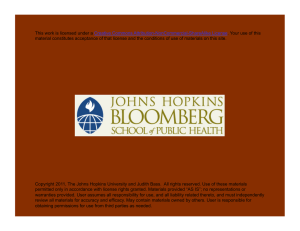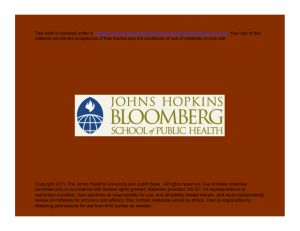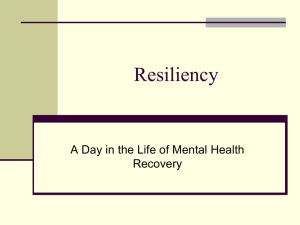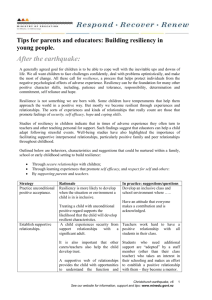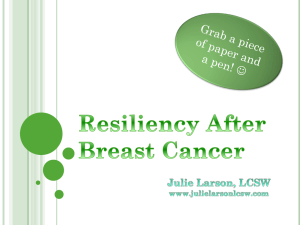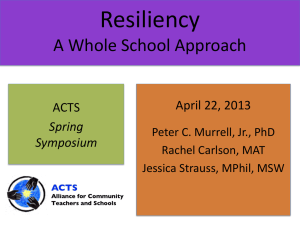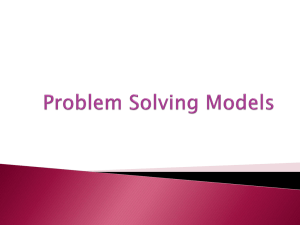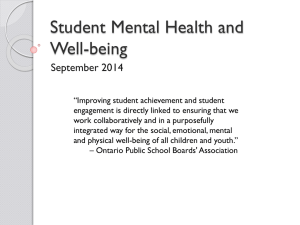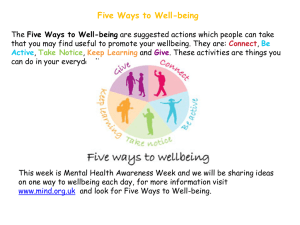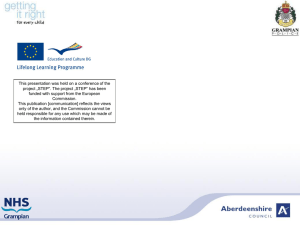here - AERO AOCE
advertisement
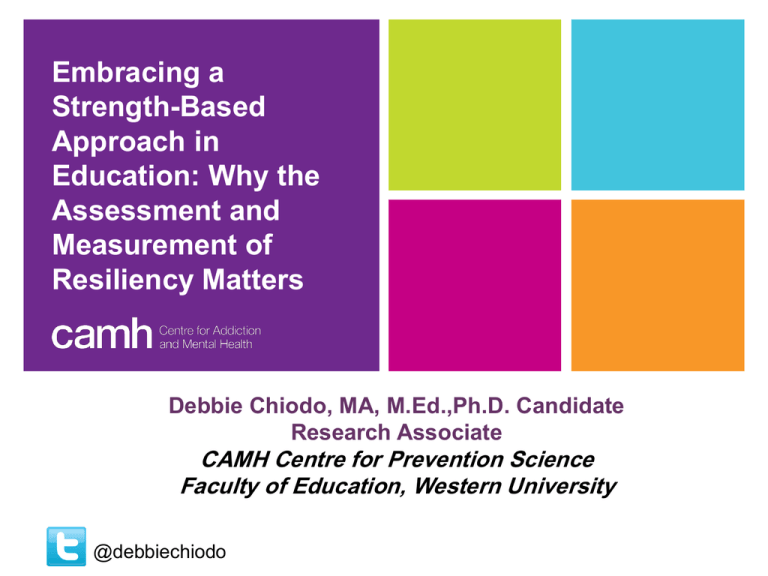
Embracing a Strength-Based Approach in Education: Why the Assessment and Measurement of Resiliency Matters Debbie Chiodo, MA, M.Ed.,Ph.D. Candidate Research Associate CAMH Centre for Prevention Science Faculty of Education, Western University @debbiechiodo CAMH: Strategies for Healthy Youth Relationships Fourth An R Program evaluated school-based program to prevent adolescent violence and related risk behaviours WHAT DO WE MEAN BY HIGH QUALITY EDUCATION IN THE 21ST CENTURY? One problem: Academic achievement remains flat if not decreasing for some groups of students. What differentiates academically Whatsuccessful differentiates academically students from their peers successful students from their who struggle, disengage and peers who struggle, disengage, and perhaps even perhaps even drop out? drop out? The capacity’ of resilience is one of the most essential personal factors influencing academic achievement. Resilience Resiliency factors improves academic achievement. Schools are the hallmark place where resiliency can be fostered and nurtured. Resiliency research in schools is about how some students, despite stressors in their lives, manage to adapt, thrive and be successful. Critical need to monitor, assess, and collect data around the positive development of students…. not just what they lack. How do you we do this? What promotes resiliency and also predicts academic success? Valuing Education Academic Confidence Connectedness Stress Management Health and well-being Intrinsic Motivation Caring and supportive relationships Self-efficacy Caring and supportive schools High expectations Growth mindset Exploring Culture and Healthy Relationships as Protective Factors in Aboriginal Adolescent Well-Being (CAMH, Western University, and the Thames Valley District School Board) Strengths that increase the academic success and well-being of FNMI youth Strengths that support the transition from elementary to high school for FNMI youth Followed FNMI students from Grade7/8 – Grade 10 What protective factors did we measure and how? Quantitative Measures Cultural Connectedness (Snowshoe, Crooks, Tremblay, Craig & Hinson, 2014) Traditions, spirituality, identity Hemingway Measure of Adolescent Connectedness (Karcher, 2003) Connection to friends, school, belongingness, family, social support, self in the present, self in the future Self-Efficacy Mental Health Continuum (MHC-SF)- Positive Mental Health (Keyes, 1998) Emotional well-being, social well-being, psychological well-being Help Seeking and Coping Skills School Support and Climate (WestEd, 2011) Qualitative Interviews Other great choices Growth Mindset (Dweck) 3 questions! Child and Youth Resilience Measure (CYRM) (Liebenberg, Ungar, LeBlanc , 2013) 12 items! My Plea
